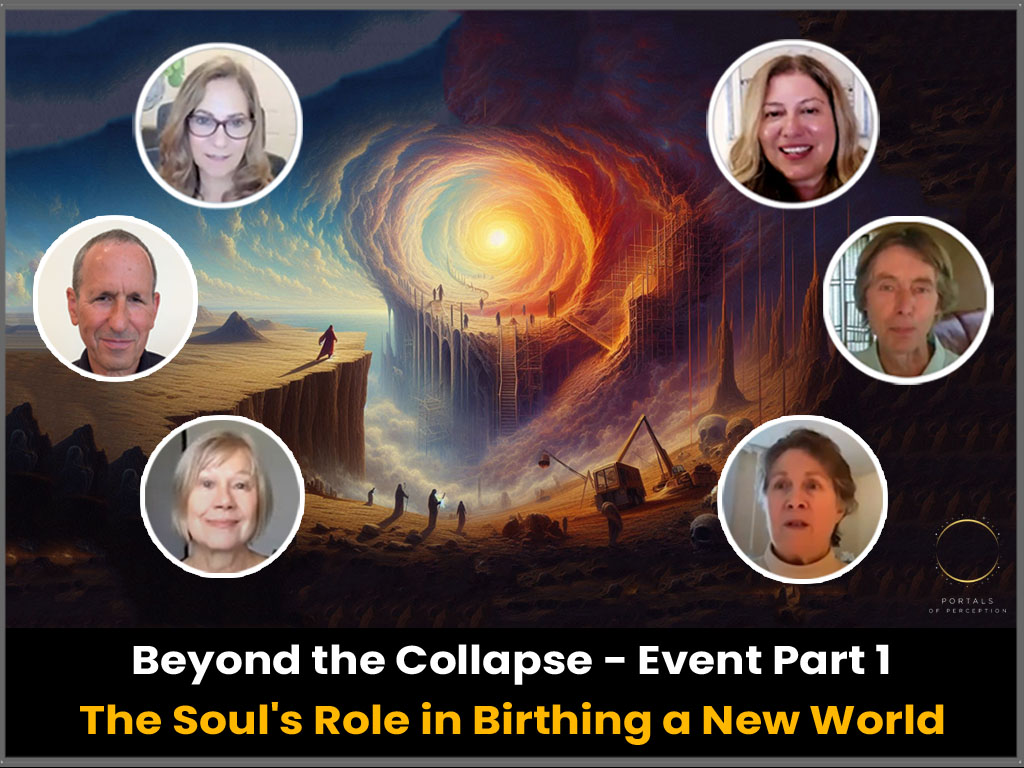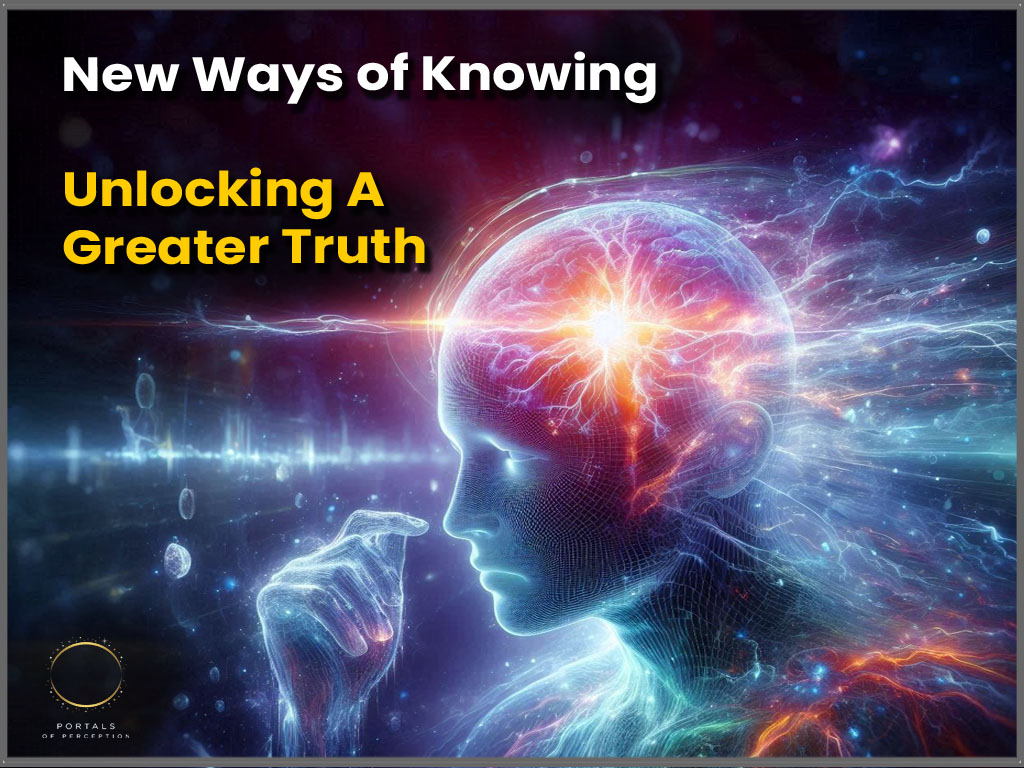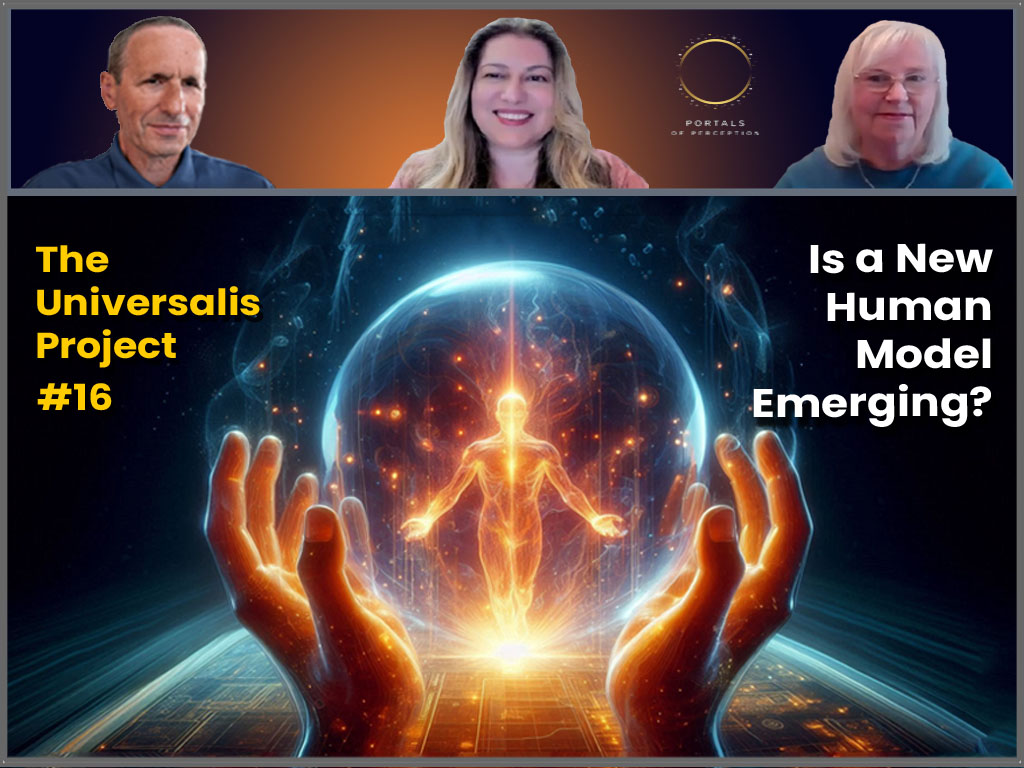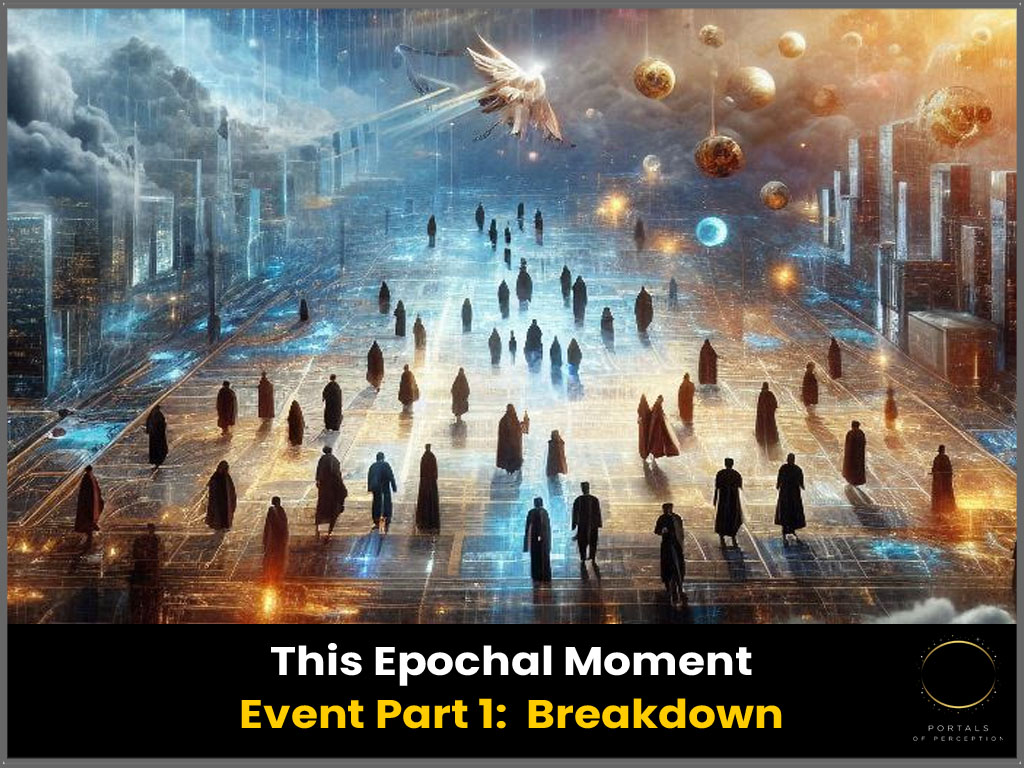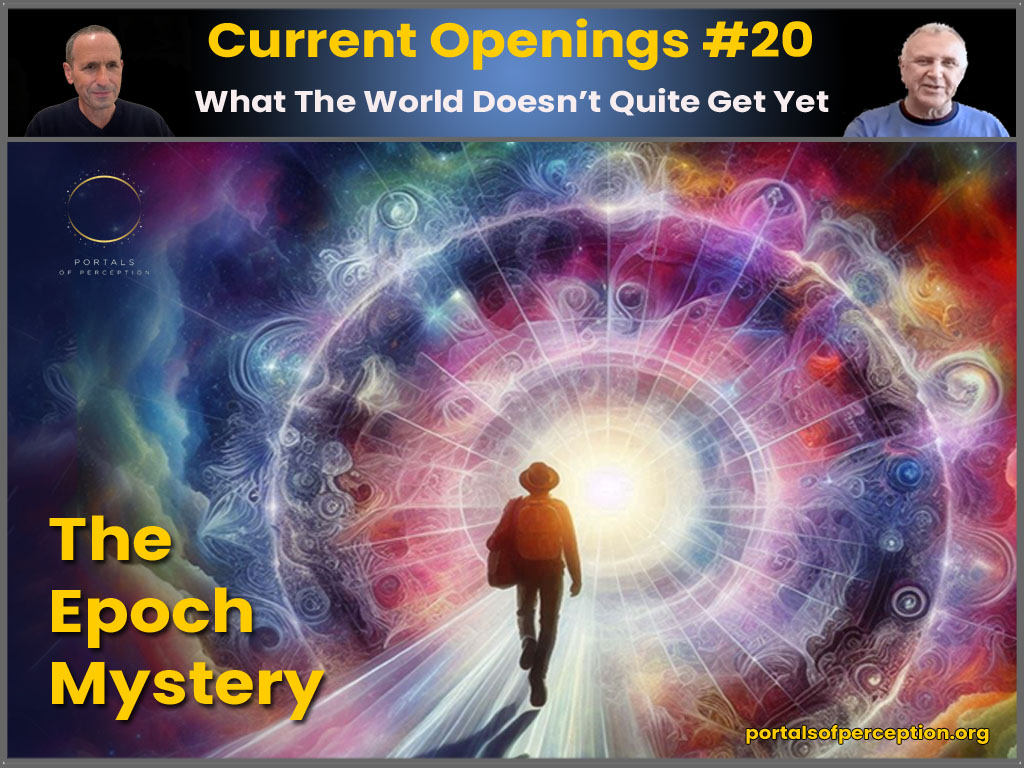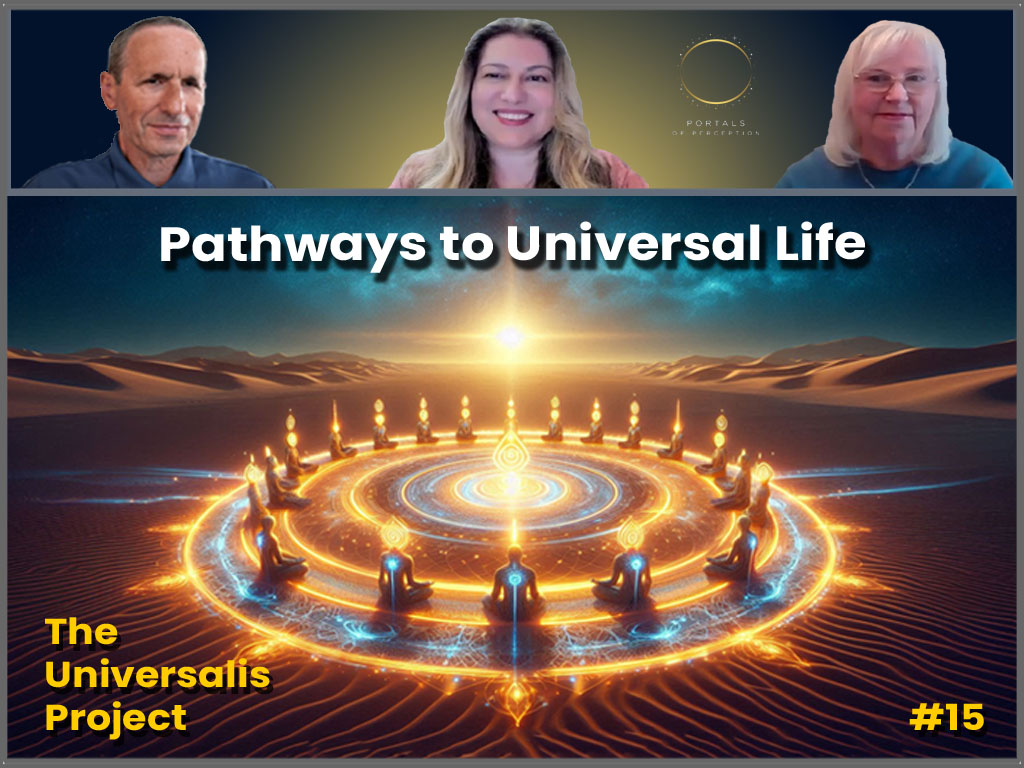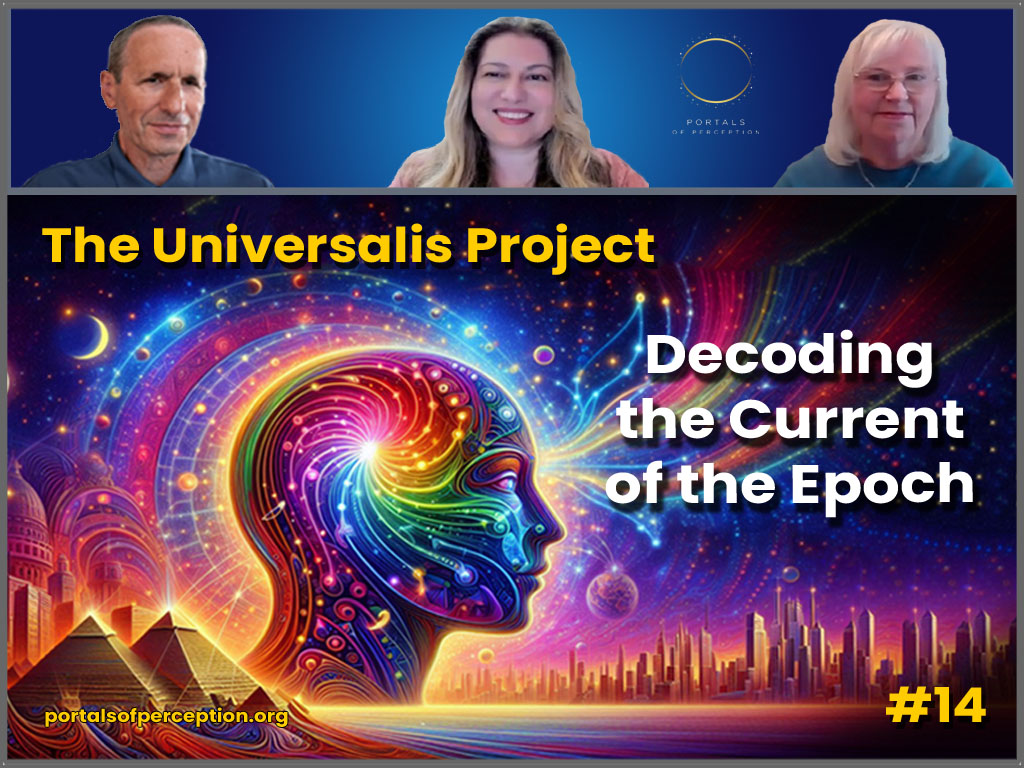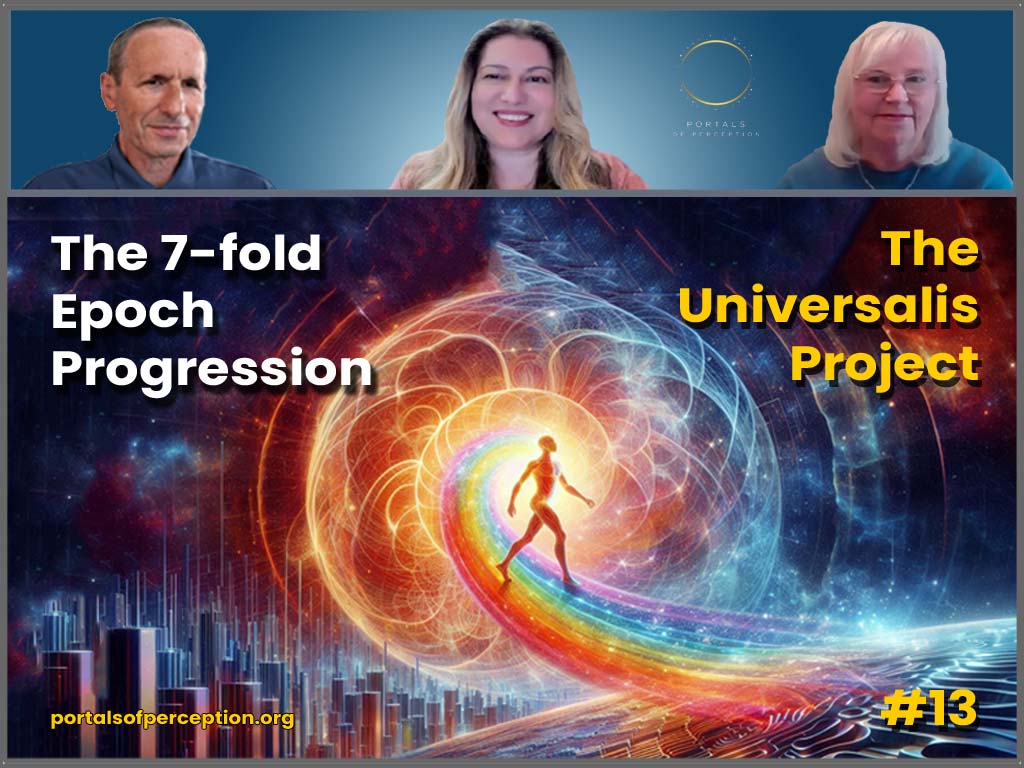In chapter 2 we described the nature of separation events and the compensatory act of the soul — the ghost. Before developing ways to recover the sense of connection and explore pathways to reengage and liberate the greater potential of the soul, this chapter begins to reflect on a whole loom of considerations, including the experience of showing up in a human model, which is governed by a seven-fold process.
This is the first in a series of installments that will be seeking to place this soul odyssey inside the context of this moment in the unfolding epoch transition. It will open the way to prod the soul’s interface with the full orchestra of inner lives of a human, including in a later installment the brain and the mind.
The Einstein Brief
Einstein summoned us to realize we cannot solve our problems with the same thinking we used when we created them. As described in the Preamble, my formative journey has taken place not in academia but in the trenches of life. I have been wrestling with this brief from Uncle Albert for more than four decades. I wanted to find practical ways to apply this Einstein insight.  One practice I have developed is to place a problem I am grappling with inside an even bigger problem.
One practice I have developed is to place a problem I am grappling with inside an even bigger problem.
For example, in my executive consulting work, clients often bring to the table issues framed in binary ways and with urgency for immediate resolution. To help transform and elevate their thinking, we reframe the challenge to recast a choice between two bad options to a choice between multiple, including several good, options. This reframe is one way we practice the Einstein brief.
I have applied this practice of placing a problem inside a bigger problem to help transform and elevate thinking in relational dynamics, in developmental matters, in solving real life issues, and in business in strategic and organizational dilemmas. We are about to apply this practice right here, right now, by placing the problem of the compensatory act of the soul, the ghost, inside a whole larger loom of considerations.
Loom work is the second modality and practice I have found to apply the Einstein thinking pivot. To release the gravitational pull (pun intended) of the problem and elevate to transcend the level of thinking that created the problem, I have cultivated the loom work approach. An example of loom work is drawing nine boxes on the page.
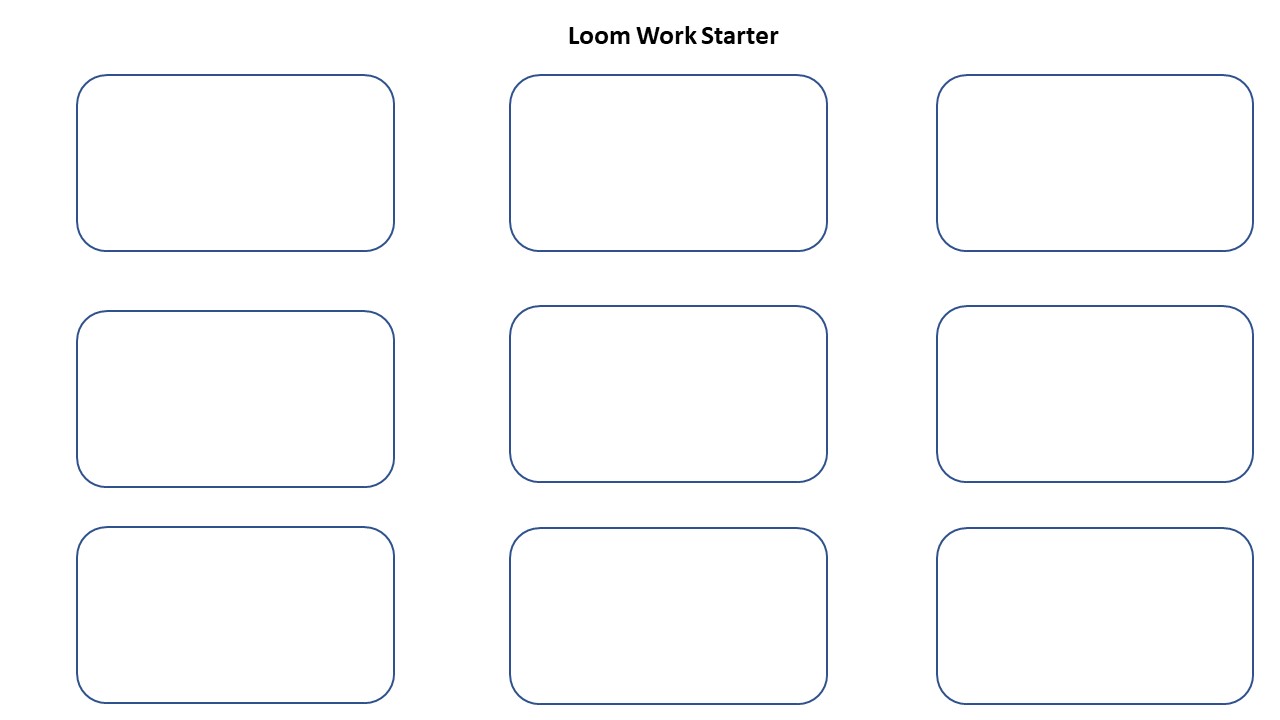
In the upper left box, I place the question or problem facing me. I then proceed to populate the other eight boxes. They may include dimensions of the issue or parallel dynamics influencing the question and range of opportunities contained in the issue. By generating a loom of considerations and opportunities, I transform the thinking landscape, and dramatically expand and elevate possibilities. The practice helps us release the myopic gravitational hold of the initial problem as though it exists on its own.
Often the problem gets partly or even completely solved simply by generating a loom of expanded considerations. If the loom did not solve the issue, it changed the landscape inside of which we view the problem and created multiple pathways for releasing it and solving its consequences. As we evolve the portals into the soul odyssey, we will demonstrate several loom work applications. For now, let us integrate one more aspect of loom work, described as symphonic orchestration.

Symphonic Orchestration
Have you ever seen a conductor's score? It contains the musical notation for all instruments and voices in the composition. A full-scale symphony orchestra can include more than 100 musicians, arranged in 12 or more sections. The conductor’s score contains the music notes of all the sections. It is a symphonic formation.
As you read these lines, your brain is processing the words in the order they are written. When you listen to Beethoven’s Symphony No. 9, you are immersed in absorbing its symphonic orchestration. You experience the ecology of resonance the orchestra creates by playing together. It is nonlinear; rather, it is a symphonic experience, which contains more than the sum of the individual parts.
You experience the ecology of resonance the orchestra creates by playing together. It is nonlinear; rather, it is a symphonic experience, which contains more than the sum of the individual parts.
Let us make then a nonlinear move here. Let us reflect on two points of awareness we will elucidate in later installments more fully. First, problems often only appear as problems because we are anchored in a binary frame, shaped by either/or linear thinking.
Second, to transcend a brain-centered process and activate the greater mind-connective possibilities, we shift from linear to symphonic process approach. Brain-centered processes induce thousands of short-wave disjointed thoughts and worries. These include all the short-term reactions that run through your brain every second. Mind-connective possibilities are intentional, long-wave, whole-picture, connective, and far-reaching processes. They include the semi-conscious, unconscious, feeling life and more. Loom work is one modality to help catalyze this shift from short-wave to long-wave and from linear to exponential symphonic appreciation. There are several points in this we need to develop and illuminate, so please place a mental marker here, to be picked up again later. While I am describing the way of loom work, I am already demonstrating its symphonic nature by concurrently seeding parallel dimensions of awareness.
We cannot truly find the new portals into the soul we are seeking through linear thinking. We need to cultivate the symphonic arrangement of holding six or nine or twelve dimensions at once, much like we do when we listen to Beethoven’s Symphony No. 9, or to the Rachmaninov 3rd piano concerto.
As I began to apply loom work for strategy development with clients, which became known as the Create New Futures approach,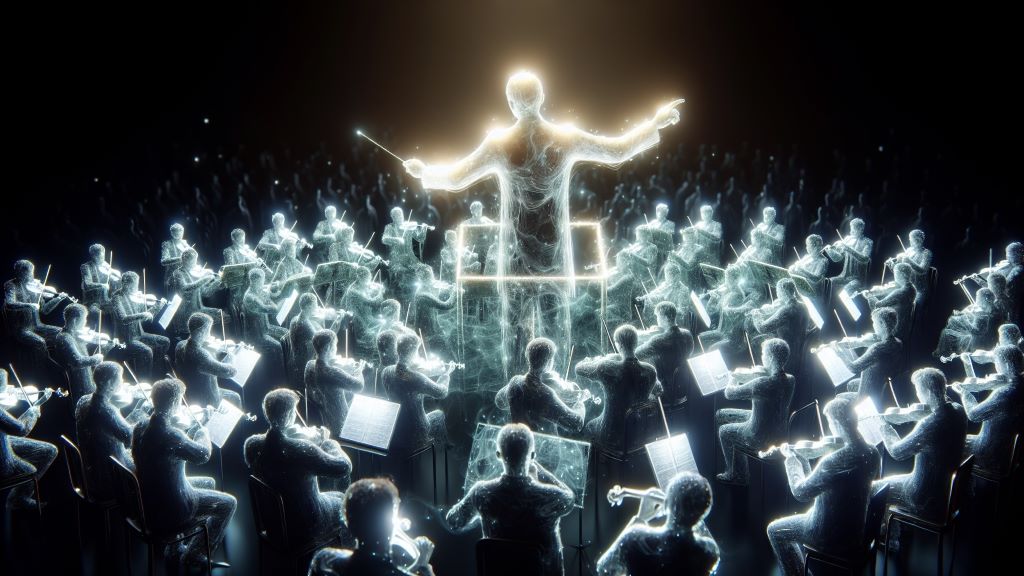 executives were initially baffled. They told me it was different to anything they’ve experienced and required a little adjustment. The workshop choreography evolved through an inquiry architecture that continually alternated the foreground with the background. Foreground conversations inquired about customers, their needs and the services and products that would optimally address these needs. Background conversations inquired into who we are becoming as a leadership team as we evolve these new services and solutions, what our values are, and how we exhibit these values with our teams every day at work.
executives were initially baffled. They told me it was different to anything they’ve experienced and required a little adjustment. The workshop choreography evolved through an inquiry architecture that continually alternated the foreground with the background. Foreground conversations inquired about customers, their needs and the services and products that would optimally address these needs. Background conversations inquired into who we are becoming as a leadership team as we evolve these new services and solutions, what our values are, and how we exhibit these values with our teams every day at work.
The game-changer insight guiding the approach was that by continually alternating the foreground and the background, we were able to unlock new connections and possibilities. In essence, the workshop was designed to activate the organizational brain–mind at a whole new level, such that the problems they were looking at were transformed in the process. Leaders often reported that we unlocked breakthrough possibilities not imagined before, all while also offering these leaders ways for reclaiming their humanness, a sense of sanity and shared purpose.
This is an example of what I alluded to by saying I was fashioned in the trenches of life rather than in academic training. In developing the Create New Futures loom work modality, I took a scientific approach. I ran hundreds of design experiments with a rigorous air-force-type debrief discipline, to refine the workshop process. Then again, the approach was never formulaic, and no two workshop events were ever exactly the same, although over time certain elements emerged as core.
For nearly three decades, I have refined this symphonic orchestration process for helping senior leadership teams unlock a new future for their organizations. It was novel and no one was doing anything quite like this.  The word got out and increasingly more teams joined the adventure. When one executive client introduced me to her peer, the line often would be, this is a different approach, trust the process and it will liberate your team’s creativity in ways you’ve never experienced before. This Create New Futures loom work modality enabled me to develop a flourishing consulting practice.
The word got out and increasingly more teams joined the adventure. When one executive client introduced me to her peer, the line often would be, this is a different approach, trust the process and it will liberate your team’s creativity in ways you’ve never experienced before. This Create New Futures loom work modality enabled me to develop a flourishing consulting practice.
I have taken this extra moment to describe the impact of symphonic loom work approach in a space seemingly as far as can be from an inquiry into the soul. Well, not quite. Silicon Valley leaders each have a soul, too, as do each and every person in their organizations. By transforming linear thinking into a symphonic orchestrated inquiry, my focus has always been on facilitating the liberation of the natural genius of those very smart, and highly competent, leaders who often find themselves in dysfunctional and even toxic organizational systems.
In the first chapter we reflected on the experience of the soul on the natural as was meant to be line. In the second chapter we explored the nature of separation events that distance the soul from its essence inclination and trigger, on the conditioned line, a ghost behavior. In a linear approach, you would now expect to find the remedy or solution in chapter three. Instead, I have been a practitioner of the Einstein brief, and we are therefore embarking in the next several chapters on developing a symphonic loom of perspectives and pathways.
It is a form of courting. Instead of thinking, “I should solve the problem,” it says, let’s cultivate an ecology of inquiry and contemplation so we become conductive for remedies and solutions to find us.
The implicit revelation in Einstein’s admonition that we cannot solve our problems with the same thinking we used to create them is that the remedy is not where the problem is. If it had been, the problem would already have been solved. Linear thinking looks to find the answer where the question is, like a person searching for their keys near the streetlight. Symphonic soul orchestration endeavors to light the whole city that a human is, so to find not just one set of keys, but a dozen of them.
We will therefore place the inquiry about the soul and the ghost inside the epoch progression context, name a range of challenges we face and, as we proceed, court the brain’s and the mind’s interface with the soul. I invite you to create your own connections and make notes, including drawing and creating your own looms as we proceed.
For this adventure to become conductively psycho-activating and a pathways-opening odyssey into the soul, it needs you to play your part, do your own work and engage your intuitive faculties as you come along for the ride.
Remember, we are following the advice of Uncle Albert by first placing the “soul’s problem” (the ghost) inside an even greater set of problems, and second by cultivating a symphonic loom that will unleash conductive perspectives and process dimensions to then reapproach the soul from a different level and vantage point.
How will we navigate this journey? Well, my navigation learning experience is instructive.

Navigating a Dark Night
I was introduced to navigating with the aid of topographic maps at 14 in the Israeli youth movement. Still three decades before GPS solved the navigation challenge, navigating a challenging topography was a delicious test I decided to embrace.  I would study the map and then look to find the drawings of the map in the topography of the terrain. It was a relatively peaceful time and the hills and valleys in the north of Israel served as a beautiful landscape for practice.
I would study the map and then look to find the drawings of the map in the topography of the terrain. It was a relatively peaceful time and the hills and valleys in the north of Israel served as a beautiful landscape for practice.
Using topographic maps was an early introduction to the concept of mental models. A map is a mental model. You use the map to configure in your mind a picture of the terrain, which you then apply to guide you as you traverse the territory. If your interior picture aligns well with reality, you find your way with ease. If on the other hand, as I have often discovered, the picture you form doesn’t match with the landscape, you can easily get confused and lose your way.
By the time I enrolled in the air force training I gathered a bit of navigation experience. I expected to do well in the preparatory phase as we learned to navigate on the ground before we would begin flight practice and aerial navigation. The rule in navigating is never force the map on the terrain. When the map and the terrain disagree, trust the terrain. If you lose your way, you must get back to the last point you recognized on the map to align with where you are.
The conclusion of the preparatory air force training included several solo night navigation exercises in a desert area.  The practice involved learning the route by rote so you could count steps and move fast. In a dark night it is not easy to see the silhouettes of the hills on the night sky to get visual validation, so you truly needed to memorize your path. Still, I felt quite confident. In a series of earlier navigations, I completed the route ahead of time and consistently arrived with the top five in my cohort.
The practice involved learning the route by rote so you could count steps and move fast. In a dark night it is not easy to see the silhouettes of the hills on the night sky to get visual validation, so you truly needed to memorize your path. Still, I felt quite confident. In a series of earlier navigations, I completed the route ahead of time and consistently arrived with the top five in my cohort.
On the fourth night navigation, with the competitive spirits high, the banter on the ride to the starting point was over the top. A few of us agreed we were going to try to run the 15K navigation course. To ensure these were genuine solo efforts we were released in five-minute increments. Well, I knew the route by rote and counted my steps while running, but 75 minutes into the navigation, I realized I had no idea where I was. I must have missed a turn and got completely lost. The 18-year-old competitive trainee that I was, I was now angry with myself.
I faced a choice. I could follow the navigation brief and try to trace back to find a point where I’d recognize myself on the map, or I could try to improvise, abandon the planned route, and seek to find a path in a general direction that will converge to a road that will bring me to the destination. The latter meant breaking the rules and not following the brief. Facing a choice between two undesired options, pride got the better of me and I defied the brief.
I was now running in the middle of nowhere, seeking to reach a road that would get me to the meeting point. I was moving fast when I reached an impassable point, and luckily fell on my face, just before the landscape dropped sharply to a dry valley. I now needed to seek a safe point to cross that basin. Desperately searching, I found a crossing point. The 15K-route was quickly becoming 20K or more, and I only had a general idea where I was.
When I finally found my way to the road, the dark night was just about ready to give way to dawn. I was frustrated, exhausted, scratched all over and, most painfully, suffered a pride injury and a wounded ego. It would take several years before I’d come to appreciate and  treasure learning from humiliations that involved deflating one’s ego and pride.
treasure learning from humiliations that involved deflating one’s ego and pride.
The little saving grace of that night was that I was not the only one who lost his way. Still, by the time I arrived at the meeting point, I became the target of the banter. “We went to sleep four hours ago and wondered where the hell were you,” a friend told me. I have never forgotten the humbling lesson of that night. The map is not the territory. If you lose contact with the terrain, you will not arrive safely and on time at your destination. Navigating begins with knowing where you are on the map. If you do not know where you are, if your mental picture is disconnected from reality, you must try to retrace to the beginning, to rediscover the point of origin. That’s the learning that night seared in me.
Let’s zoom out.
Do you ever wonder, is it possible humanity has lost contact with the natural terrain of what being human is and the meaning of life? Could it be we’ve been running with increasing frustration, a bit like I was running on that dark night?
Is it possible humanity has lost touch with reality and is now at a place where we cannot begin to recognize who we are?
In navigational terms, is it possible our search for knowledge and for solutions to our problems has for a couple of centuries started from a displaced place?
Okay, please place in one of the boxes in your loom, the navigation lessons and inquiry. Now, let us move to another space in the loom, the seven-fold epoch transition process. Let us dive into this.

A Brief Sevenfold Epoch and Soul Process Scaffold
We described the soul as an orchestrating intelligence loom accompanying the spirit in its earthly journey inside the human model, helping it navigate the planetary terrain. It follows that as the terrain shifts, the soul continues to recalibrate and update its guidance.
If we ask: Is the human soul of 2024 the same as the human soul of 1924 or of 1024? We would offer the answer is both yes and no.
The soul is the same in that it functioned as a navigation liaison in 1024, in 1924, and in 2024. However, since the planetary scenery and the human experience have changed from 1024 to 1924 to 2024, the soul orchestration knowhow and capacity have evolved to meet the needs. The requirements and demands of navigating the planetary theater have changed in both obvious and subtle ways. In this sense, a 2024 soul orchestration confronts new and different sets of challenges.
For example, the majority of people who lived in 1024 never travelled more than a few miles away from their place of birth, and most did so by foot. The first people experiencing driving a car in the early 1900s described an accompanying dizziness. In 1924 a growing number of people started to integrate the car-ride experience. In 2024 toddlers get to fly over an ocean to the other side of the world.
To facilitate and navigate these experiences, the human soul needed to assimilate a new experience landscape, which it does through its interface with the brain, the nervous system, every cell in the human body, and with the environment. Imagine the soul not merely as a separate entity unto itself, but rather as the merging integration loom of the intelligence of all parts and the relationships of all parts.
The Preamble seeded that this discovery voyage into the soul is arising now inside what we describe as a Violet upsurge and culmination in an evolving seven-fold epoch story. As a broad general location, consider the epoch we are referring to as a more than 3000-year story, since the collapse of the bronze age.
The seven-fold appreciation is not a new development theory or model. Instead, it is an observable pattern governing all living processes on earth. Much like the day begins with sunrise and concludes with sunset, shifting into the evening and the night, with that pattern repeating the following day. It’s the same with the seven-fold rainbow spectrum pattern and its governing influence on all living processes.
The septenary pattern appears every day: red signifying sunrise; orange expanding the potential of day through the morning; yellow representing the aligning energetic potential of noon; green bringing an afternoon discovery and renewal; and blue carrying a consolidating influence into the evening. This gives way to Indigo integration and Violet transformation processes to occur during the night.
Similarly, the seven-fold governing pattern plays through the week, and the year, and the life of a person, and the life cycle of any endeavor, be it personal, organizational, or business, as well as the rise and fall of nations and civilizations. The seven-fold pattern reemerges through all these dimensions and scales up as it does in the case of the epoch.
Here is one way to visualize and appreciate the seven-fold natures in any of these dimensions. Red represents an originating potency where we arise. Orange is where we find support for the new beginning to expand and grow. Yellow is where the growing territory and expression space are realigned around a unifying orchestration. Green is where we find renewal to regenerate the arising. Blue brings the potency that enables us to regulate, consolidate, and systematize. Indigo offers an ecology to integrate, merge, and transfer knowhow. Violet leads to a phase-shift transformation and reemergence.

Traditionally, history mostly tracks big exterior events unfolding over time. These primarily include the story of the victor and the vanquished — who killed and pillaged whom. The epoch journey study seeks to go beyond his-story (history) to attune to her-story. We use the term her-story not in the context of a feministic study of history. Instead, it is a contemplative inquiry, seeking to trace the interior soul experience, and how it evolves and plays out through the seven-fold influences and natures that reemerge and govern through these times and events.
The epoch journey comprises a whole book by itself. For our soul odyssey purposes, we will occasionally zoom in and out of it as part of the backgrounding–foregrounding alternating current of the voyage we are developing.
The immediate importance of this was offered in the Preamble. We described the nature of current epoch developments as an Indigo-Violet culmination, which we anticipate is a transitional phase that will accompany us for the next several decades or more. The Indigo–Violet shift is characterized by disruptive, seemingly out-of-this-world transformational events that will leave little of the late 20th century world order standing. Implicit in this is that the Indigo–Violet phase-shift also brings profound possibilities and breakthrough opportunities.
We described the nature of current epoch developments as an Indigo-Violet culmination, which we anticipate is a transitional phase that will accompany us for the next several decades or more. The Indigo–Violet shift is characterized by disruptive, seemingly out-of-this-world transformational events that will leave little of the late 20th century world order standing. Implicit in this is that the Indigo–Violet phase-shift also brings profound possibilities and breakthrough opportunities.
Most grand narratives of history focus on development stages. For example, they describe a transition through prehistoric, ancient, medieval, early modern (Renaissance and the Enlightenment), modern and contemporary periods. The stages are also narrated as indigenous tribal values giving way to traditional values, leading to modern values, transitioning in recent decades to post-modern values. By applying the her-story lens to the Epoch trace study, we let these development stages recede into the background as seven-fold impulses and natures move into the foreground.
For example, the expansionary Orange impulse is apparent in the ancient world in the expansion of the Roman Empire. The Orange pattern reasserts itself again through the rise of the mercantilist expansion of the British Empire.
A Green impulse of renewal and rejuvenation emerged in the ancient world in one way with Socrates and Plato and in parallel with the sublimation aspect in the Olympiad and the Hellenistic games. 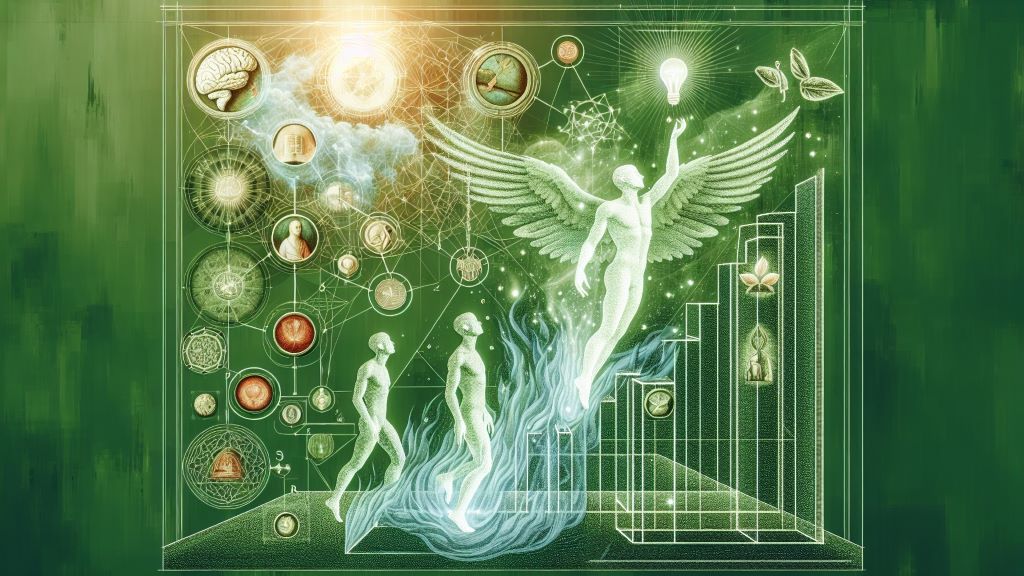 A Green renewal pattern re-emerged shortly after the Black Plague with the Renaissance. The 20th century experienced a brief Green impulse after the exhaustion of WWII with the baby boomers imagining a new world, and unleashing the sexual revolution, new forms of art, and the second wave of feminism and the environmental movement. A Green fractal re-emerged in the late 1990s to work through Indigo and expressed itself in the computing revolution and the early phase of the Internet.
A Green renewal pattern re-emerged shortly after the Black Plague with the Renaissance. The 20th century experienced a brief Green impulse after the exhaustion of WWII with the baby boomers imagining a new world, and unleashing the sexual revolution, new forms of art, and the second wave of feminism and the environmental movement. A Green fractal re-emerged in the late 1990s to work through Indigo and expressed itself in the computing revolution and the early phase of the Internet.
Indigo nature and potency emerged in prehistoric and ancient societies with the rise of cities. In the modern world, the Indigo pattern was used up with the development of commerce, trade, and exchanges, and in recent contemporary history through the connectivity unlocked with the Internet and social media.
These are a few minimalistic examples to help us get sensitized to these recurring patterns and fractals through the her-story dimension of history.
The Sevenfold Soul Process Knowhow and Integrity
This being a seven-fold-natured planet, where all living processes arise, evolve, and come to conclusion through these seven potencies, the soul, as an accompanying intelligence loom facilitating human life on Earth, carries seven-fold intelligence.
In the daily, weekly, and annual sequences, and in the life cycle journey and the Epoch progression, each of the color fractals carry certain energy potential. Those potentials are never “good” nor “bad”. They can, however, be used and applied in degenerative or regenerative ways.
We each experience these fluctuations every day. There are moments and situations where we act with increasing integrity, vitality, and alignment to our values and what matters to us, and moments when we act with lesser intactness and lose a wholesome sense of clarity. These are the natural ebbs and flows of soul orchestration.
and what matters to us, and moments when we act with lesser intactness and lose a wholesome sense of clarity. These are the natural ebbs and flows of soul orchestration.
When we respond and act with integrity, we produce an inner glow, accompanying soul settlement and well-being. When we dilute or fracture that fidelity and act outside of integrity, we defuse our soul power and, in that moment, cloud the brightness of the inner lives.
These fluctuations occur at many moments every day; for example, in our interactions with other people; in our relationships with food, with money, with the environment; in the way we take care of the core domains of life; and in the inner dialogue about all these dimensions.
When we respond from distress and create more of it in the body, because of unregulated emotional response or unregulated emotional eating, we depreciate our energy and wholesomeness.
We revitalize our physical, mental, emotional, and spiritual energies and renew 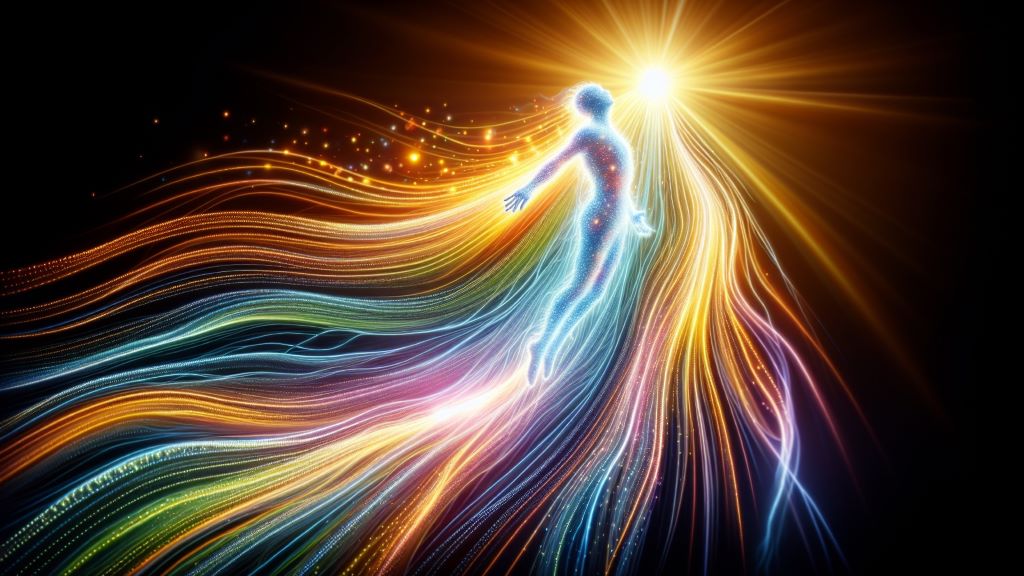 our inner power and wholesomeness by responding and acting in alignment with soul guidance, especially when the soul is free to express its third urge, the champion of higher purpose. The ongoing evaluation, calibration, and the replenishment of these qualities and properties are forever generated with the facilitation of a seven-fold soul orchestration.
our inner power and wholesomeness by responding and acting in alignment with soul guidance, especially when the soul is free to express its third urge, the champion of higher purpose. The ongoing evaluation, calibration, and the replenishment of these qualities and properties are forever generated with the facilitation of a seven-fold soul orchestration.
In chapter one we proposed the soul carries a three-fold orchestration brief. We are now coupling these three urges with a seven-fold octave they each represent. Life one (the guardian of life), Life Two (the steward of learning), and Life Three (the champion of higher purpose), each contain a septenary process knowhow. We will delineate these in greater detail in a future installment.
While the seven-fold pattern moves swiftly on the daily and the weekly cycle, it makes a long arc where the evolving epoch story unfolds. Since each of the seven wavelength fractals represent certain natures of potential, they enable and get expressed by certain historic and “her-storic” cultural and socio-economic phenomena.
Violet represents a catalyst function for transformations that arise at the end of an epoch. The shift can be experienced both “below” and “above” the line. “Below the line” Violet is expressed through, for example, breakdowns that seem to trace regressive patterns to earlier evolutionary stages. These include the rise of authoritarian instincts and despotic leaders and the escalation of vicious murderous wars we thought were left in the dustbin of history.
“Above the line” Violet appears with, for example, scientific and social innovation, personalized medicine developments, and development breakthroughs in the arts, in media, and in multiple other domains.
The seven-fold process describes how life on Earth evolves from birth to death. The soul facilitates and orchestrates this journey of the spirit in the human model and engenders its three urging impulses through the seven-fold loom.
To facilitate well-being, vitality, resilient resourcefulness, and optimal development, the soul seeks to engender whole-person embodied integration. The opposite of whole-person throughout integration and embodiment is being fractured into parts. For example, being only in the head or only in the heart or only in the hands or only in the gut — each representing a fractured and insufficient orchestration. 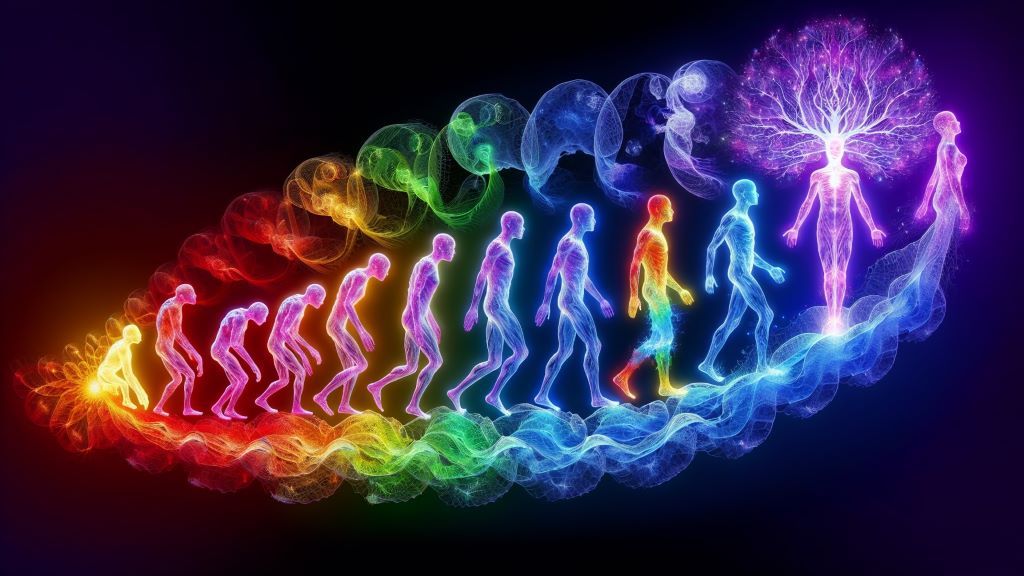 Embodied wholesomeness includes and integrates the whole person: head, heart, hands, gut, pelvis, feet, the energy field, and the seven-fold natures of the human experience.
Embodied wholesomeness includes and integrates the whole person: head, heart, hands, gut, pelvis, feet, the energy field, and the seven-fold natures of the human experience.
Human life arises inside a relational integrated dynamic. Relational integration is not a feature, it is the essence of our humanness. We are each a whole orchestra of many inner lives. Fragmentation to parts results in cacophonous disintegration, which triggers energy dilution and diminished well-being and vitality. The soul forever seeks to bring you together into an integrated embodied whole, where you do not get fragmented and dilute your power but rather where you restore and build energy.
In my consulting work with leaders, I help them develop as whole leaders. At one level it means head-heart-hands leaders. That’s the three-fold leadership approach that encourages people to integrate head knowledge with the feeling, intuition, and the knowledge of the heart, and bring this integration to practical action and behavior.
Occasionally we reflect with clients on how they hope to evolve as a fivefold leader by cultivating their strengths and capacities in five crucial dimensions of leadership: strategy, operation, people, numbers, and technology. In both cases, in the threefold and in the fivefold modalities, my endeavor is to help the leader evolve as a whole person leader. I typically will never bring up the soul because it is not the premise of our work. For me, these efforts are always sourced in the awareness that by helping a leader become more whole in themselves and in their work, I help them gain increasing access to their own enhanced soul orchestration.
The seven-fold process offers a higher resolution appreciation of living processes. We will therefore return to the appreciation of these seven natures as we evolve the voyage into the soul. Remember, we are in the process of cultivating a symphonic loom to enable us to discover elevated pathways to healing the fragmentation (ghosts) of the soul.
The Next Portal Into the Soul
In this third chapter we reflected on the Einstein brief and its two practical applications in placing a problem inside an even bigger problem and in the cultivation of symphonic loom process. My experience of getting lost navigating in a dark night offered an entry to asking, could it be that humanity has lost touch with the terrain of what being human is and arrived in a place where we struggle to recognize who we are?
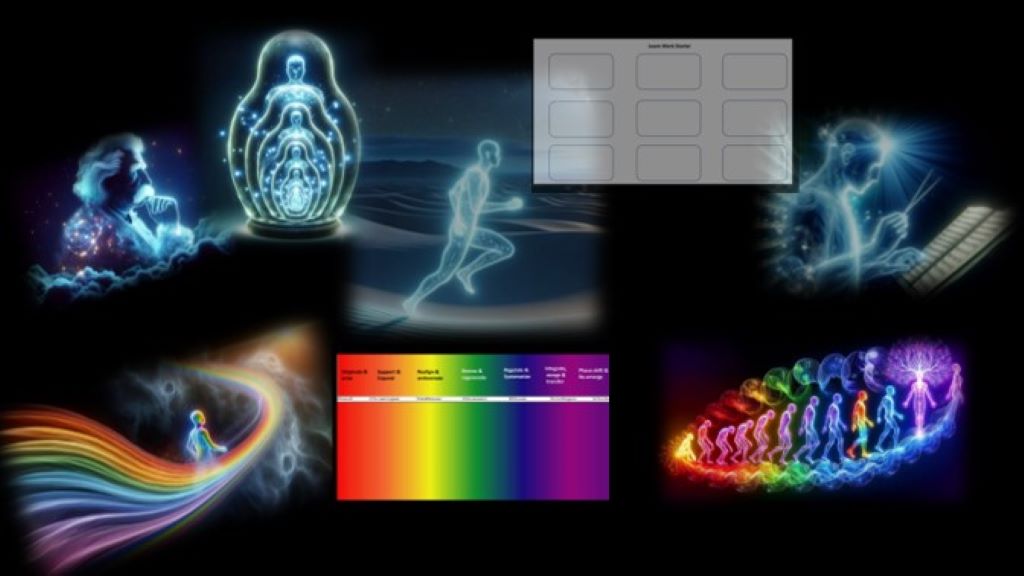
We then seeded a starter appreciation of the seven-fold natures governing all living processes. These seven natures both nourish the soul and are part of its evaluation, and calibration knowhow.
In the next installment we will ask how we can expand space for the soul by cultivating new connections. We will ask how we facilitate ease and flow by loosening the grip of arresting definitions as we prod the liminal space outside of what we think we already know.
To put our soul odyssey in the epochal context we will reflect on the post-ideological transition and on the grandeur of science and its shadows. These inquiries will enable us in later installments to court the brain and appreciate the potential and peril of this moment and our relationship with our brain.

Aviv Shahar
Aviv is the Founder of Aviv Consulting, helping leaders unleash strategic innovation, and is the author of Create New Futures: How Leaders Produce Breakthroughs and Transform the World Through Conversation.
Visit: Aviv Consulting


